All products featured are independently chosen by us. However, SoundGuys may receive a commission on orders placed through its retail links. See our ethics statement.
Best workout headphones
May 23, 2024





Take SoundGuys’ quiz to find your best fit
You shouldn’t start to exercise with the goal of getting a six-pack; it takes too long, and more often than not, our dedication dwindles before we can see those washboard abs. There’s no shame: we’ve all been there. When it comes to fitness, we recommend starting with an attainable goal to feed you that dopamine hit, and with the SoundGuys way, you don’t even need to do a single crunch. Instead, all you need is a good pair of workout headphones.
What's new?
- This list was updated on May 23, 2024, to add new top picks and notable mentions and answer additional FAQs.
- Be sure to check out our other workout-related lists as well, such as the best headphones and earbuds for running earbuds, and the best bone-conduction headphones
What makes a good pair of workout headphones?
There are a few factors to consider when looking for headphones to bring to the gym. The first thing to consider is what kind of headset you actually want. Do you want wired or wireless? Over-ear headphones or wireless earbuds? Everyone has their own preferences, but in this list, we’re going to be going over the best over-ear and on-ear headphones for working out. If you prefer earbuds, don’t worry; we have you covered there too.
Now that we’ve narrowed that down, some other important factors you should keep in mind are cost, sweat resistance, comfort and fit, durability, and battery life. We go into each of these in greater detail further down in the article, but if you just want to know what the best workout headphones are, then let’s get into it. For most people, you should go with the Plantronics BackBeat FIT 6100.
Most people should get the Plantronics BackBeat FIT 6100
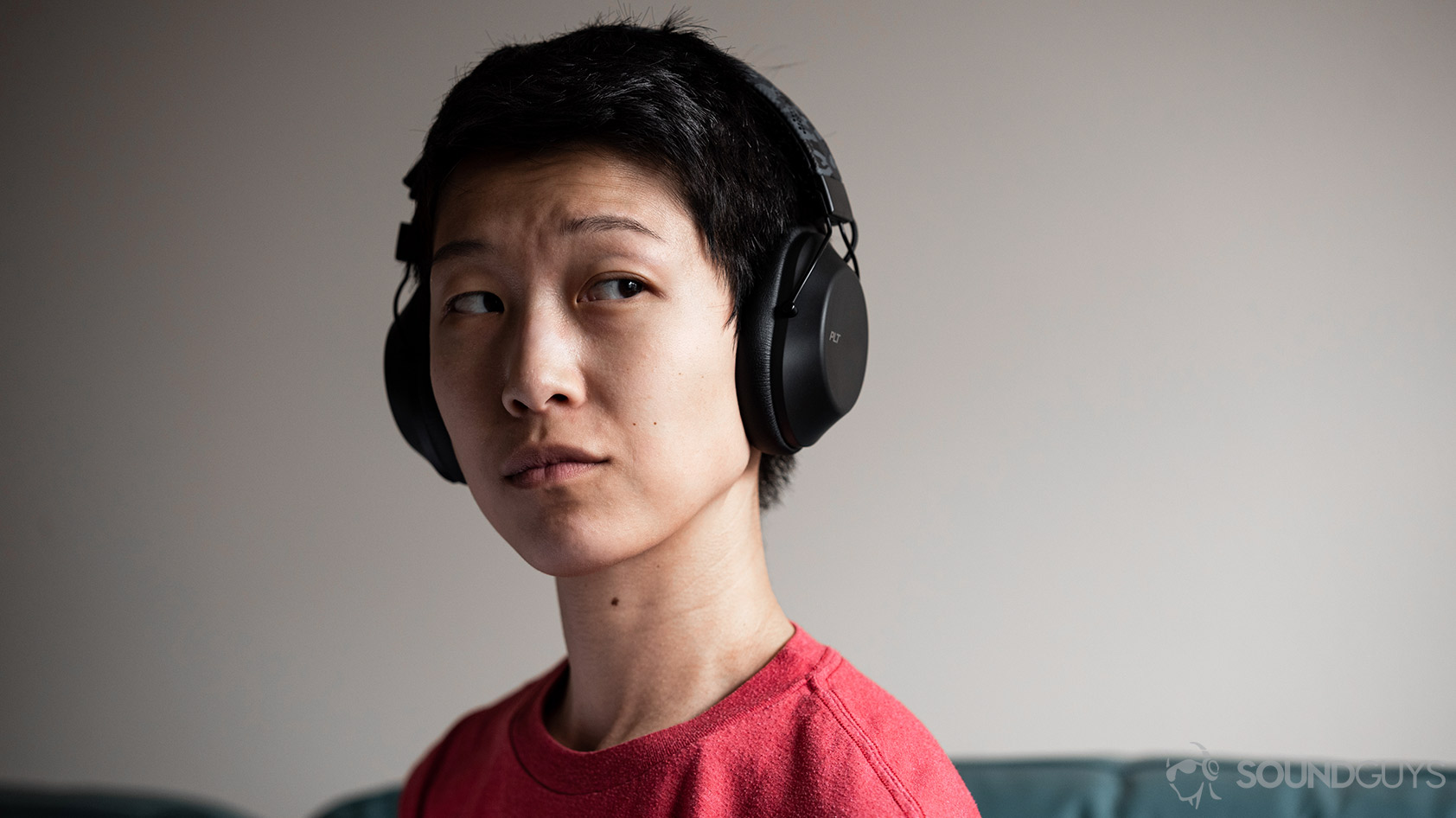
If you want a pair of workout headphones that aren’t earbuds, you’ll have to make some compromises. Often, you have to choose between water resistance, isolation, or sound quality when buying headphones, but that isn’t the case with the Plantronics BackBeat FIT 6100.
This set of over-ears was designed specifically for working out. The headband features an adjustable mechanism, so you can temporarily tighten the fit for vigorous workouts. The BackBeat FIT 6100 has an IPX5 rating, which means it can withstand all the sweat you throw at it. Battery life is very good: you get 27 hours of playtime from a single charge, and the headset supports fast charging. When you plug in the micro-USB cable for 15 minutes, you get six hours of playback. It supports Bluetooth multipoint, so you can connect to two devices at a time, which is great when working out from home: you can keep an ear on incoming work chats from your computer while enjoying music from your phone.
Sound quality is only okay because bass notes make it hard to hear midrange notes. This is called auditory masking, and it’s something we encounter every day. Normally, we ding points for this, but the BackBeat FIT 6100 are workout headphones, not audiophile cans. For the price, it’s hard to find fault with the BackBeat FIT 6100.

If you like bass, go with the Sony ULT Wear
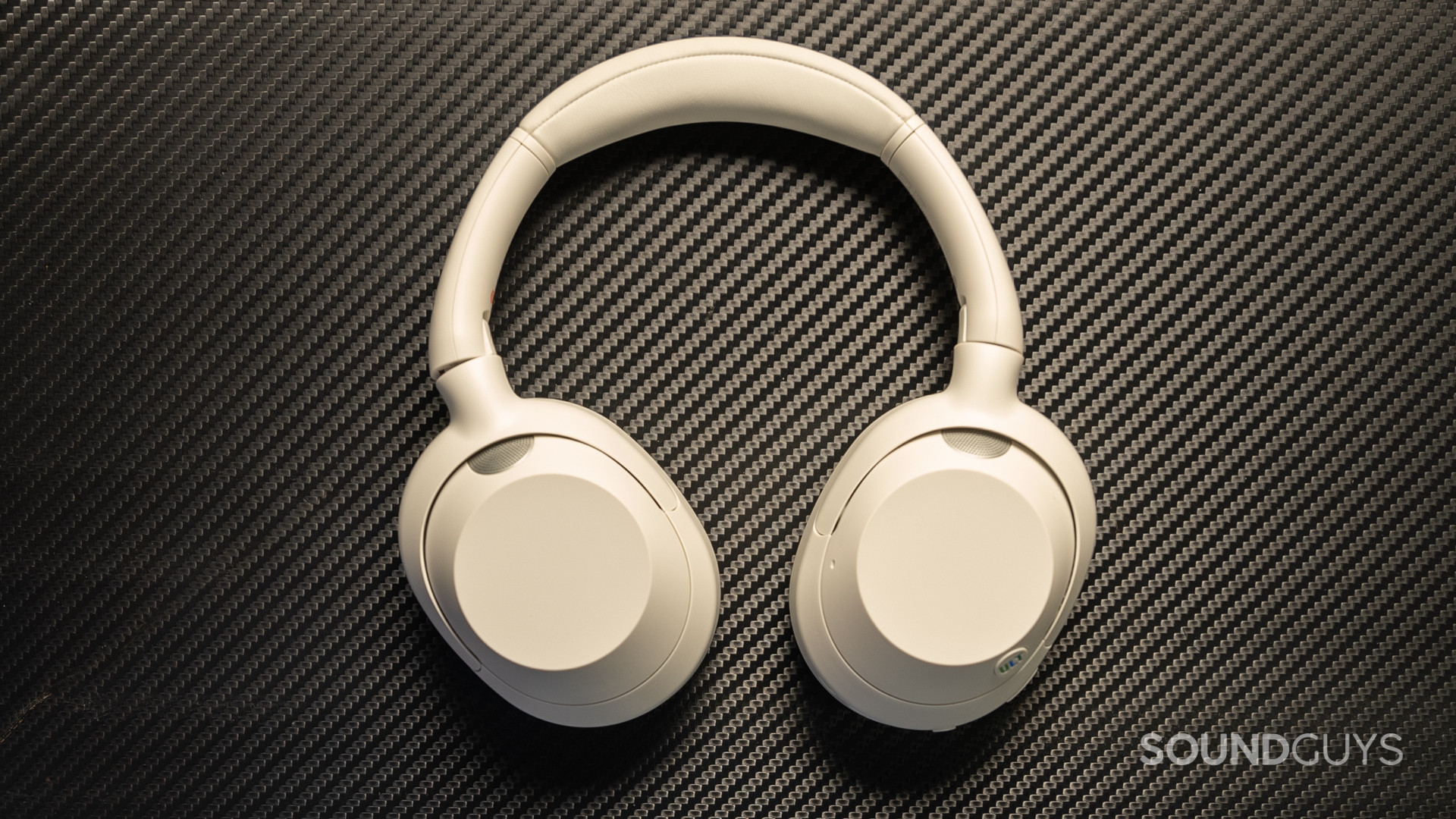
For bass lovers looking for headphones to power their workout playlist, the Sony ULT WEAR is an excellent choice. These over-ear headphones pack a serious punch when it comes to low-end frequency response. The default sound signature emphasizes the bass frequencies, providing a thumping, immersive experience that can motivate you through tough gym sessions. And if you crave even more bass, the dedicated “ULT” button lets you dial up the intensity with two levels of additional bass boost.
While the emphasized bass can make the overall sound a bit muddy, the Sony ULT WEAR makes up for it with impressive noise cancelation to block out gym distractions. The large ear cups provide a comfortable fit for extended wear, and the 32-hour battery life ensures the headphones will last through multiple workout sessions on a single charge. The touch controls on the earcup make it easy to adjust volume and skip tracks without breaking your flow. For bass fans who want to be fully immersed in their workout playlist, the Sony ULT WEAR delivers a powerful, bass-forward audio experience.

Outdoorsy folk should get the Shokz OpenRun Pro
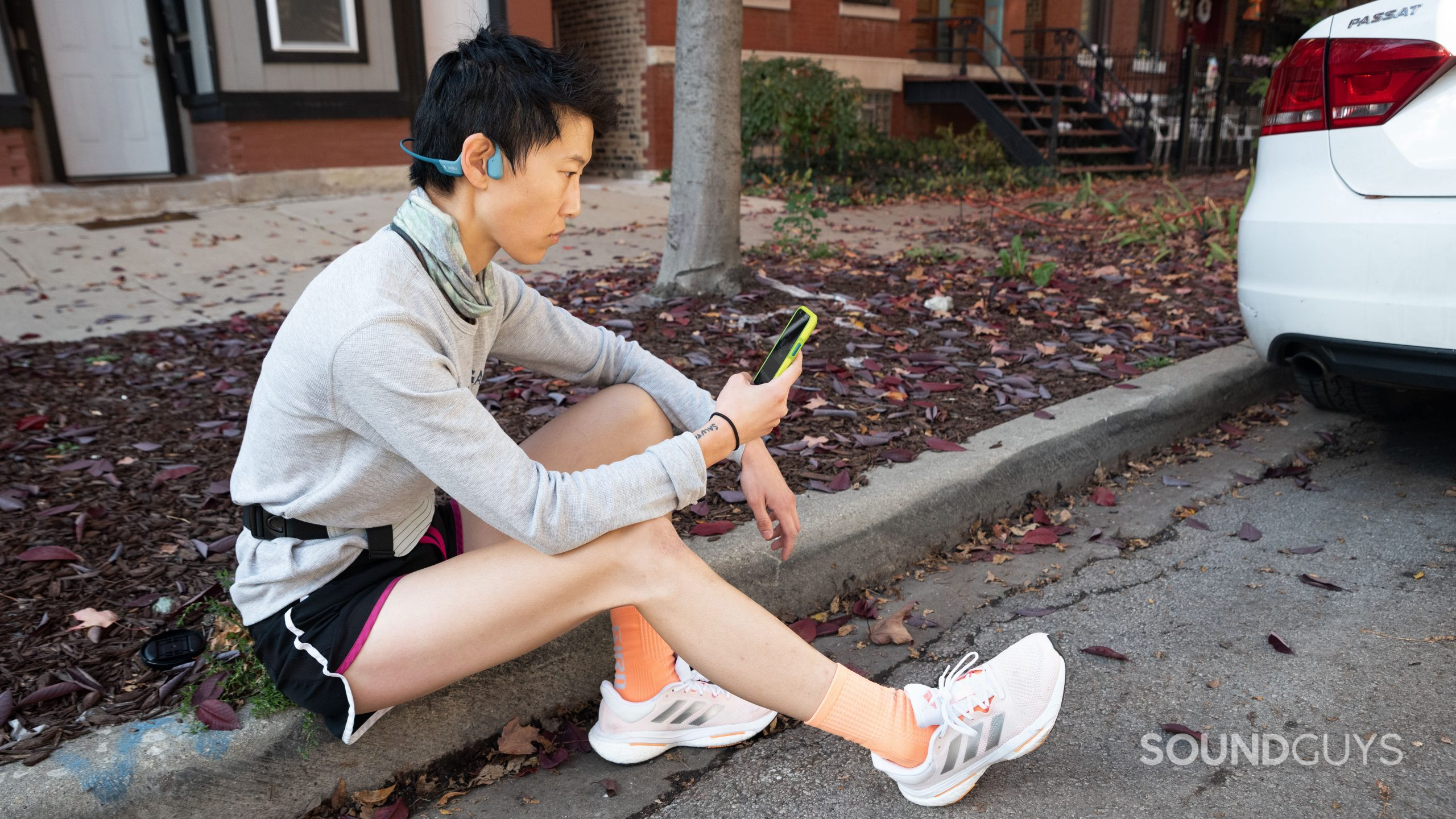
The Shokz OpenRun Pro headphones are the top pick for outdoor workouts due to their safety-oriented design. These bone-conduction headphones keep your ears open, allowing you to stay aware of your surroundings. They are ideal for runners, cyclists, and outdoor athletes. They are compatible with in-the-ear hearing aids and suit those who prefer not to insert earbuds into their ears.
The headphones offer comfort and durability with a design that rests on your cheekbones. They are also IP67 dust and water-resistant. With up to 8 hours of battery life and quick charging, they are reliable for extended outdoor sessions. While not audiophile-grade, their sound quality is decent, making them a great choice for those who prioritize safety and situational awareness during outdoor workouts.

The Under Armour Project Rock by JBL are a favorite among athletes
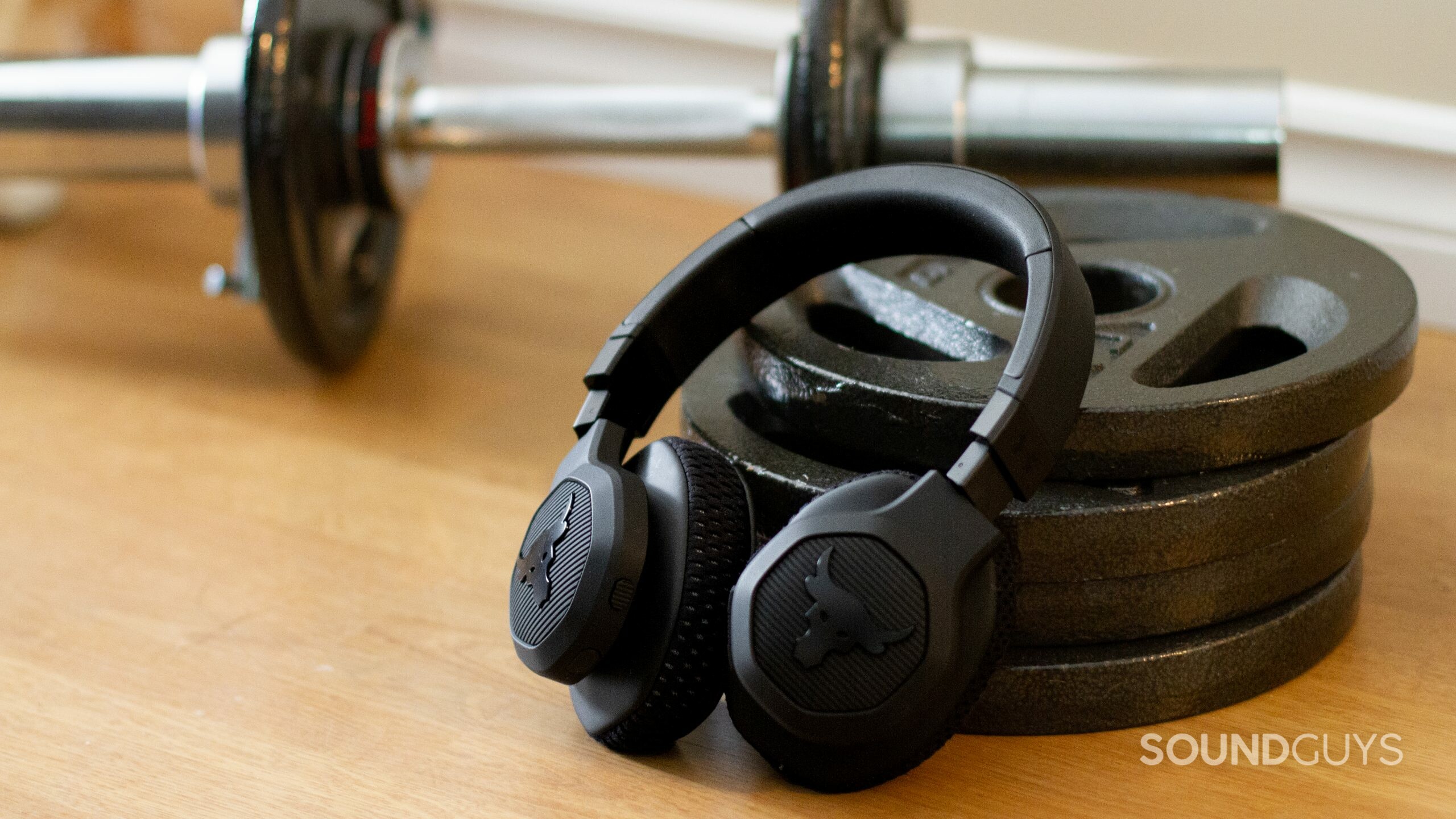
JBL and Under Armour often collaborate on workout headphones and earbuds, and one of its iterations roped in Dwayne “The Rock” Johnson. The Under Armour Project Rock Over-Ear Training Headphones by JBL is an over-ear noise canceling headset with an IPX4 rating. These bulky headphones have large button controls and removable ear pads that make it easy to maintain the headset.
The battery life is ridiculously long: 41 hours and 13 minutes of playtime with noise canceling on. You can fast charge the headset with the included USB-C cable: 5 minutes of charge provides 120 minutes of battery life. If the battery does happen to deplete, you can use the integrated headphone jack to connect to your phone.
As with many JBL headsets, the Project Rock Over-Ear has a bass-heavy response by default, which is made even bassier when you enable “The Rock’s Project Rock EQ.” With the default setting, bass notes are approximately two times louder than mids, which subjects some vocals and strings to auditory masking but nothing too egregious.

Don’t want to spend too much? Get the Anker Soundcore Life Q30
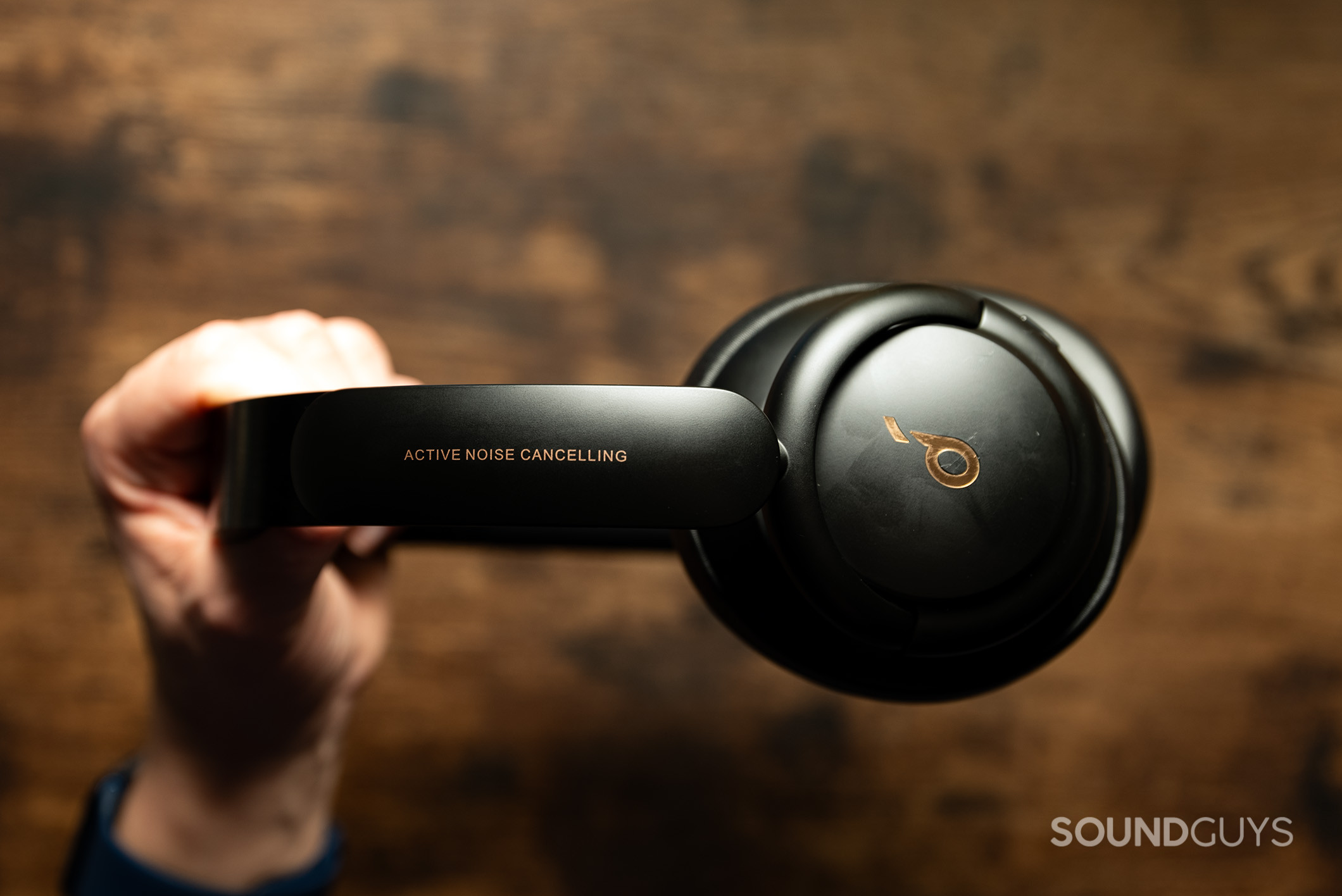
For those on a tight budget, the Anker Soundcore Life Q30 delivers decent value as workout headphones. Despite the affordable $79.99 price tag, these over-ear headphones pack features like active noise cancellation (ANC), transparency mode, and customizable sound via the companion app. The ANC does a commendable job of blocking out ambient noise at the gym.
The lightweight plastic build keeps them comfortable for extended wear, though they do lack sweat/water resistance, so be sure to wipe them off. Battery life is stellar at over 46 hours of playback per charge. While the default sound signature is quite bass-heavy, the Soundcore app allows you to tone it down via the EQ settings if desired.
Call quality is decent enough for handling calls between sets. The physical button controls are easy to operate when your hands are sweaty. You won’t get premium build quality or advanced codec support at this price, but the Soundcore Life Q30 punches well above its weight in terms of features and overall audio performance. For gym-goers on a budget, they represent an excellent, affordable option.

If you have money to burn, get the Bose QuietComfort Ultra
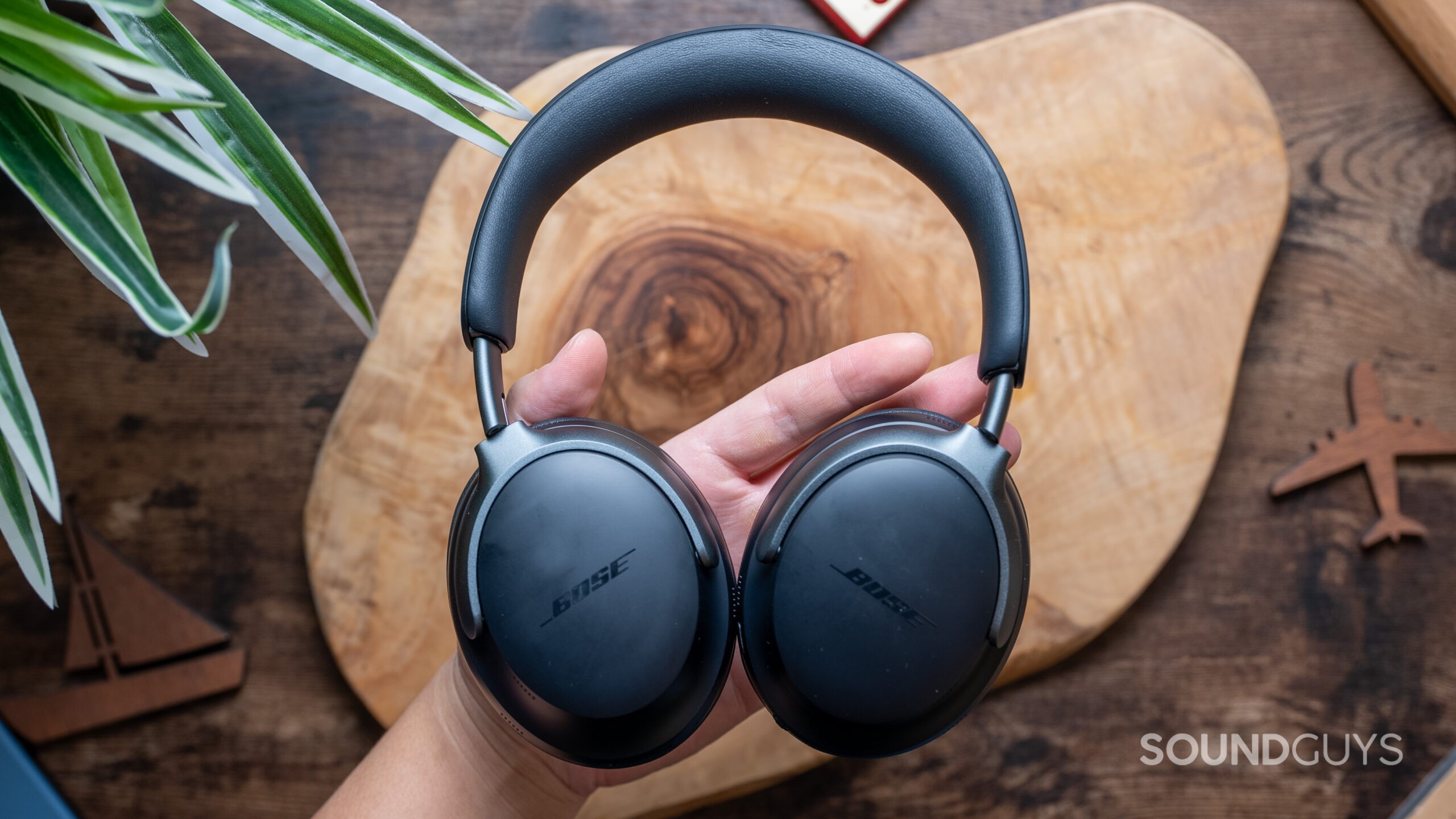
For those willing to splurge on a top-tier option, the Bose QuietComfort Ultra Headphones represent an excellent premium choice for workout headphones. While pricey at $429, these over-ear cans pack in impressive tech like multipoint pairing, aptX Lossless codec support for high-quality wireless audio, and Bose’s latest noise cancelation.
The lightweight plastic construction keeps them relatively portable at 253g, though they lack any water resistance. Battery life is a decent 27 hours per charge. What sets the QuietComfort Ultra apart is the CustomTune feature that adjusts the sound profile to your unique ear anatomy for an optimized listening experience.
Thanks to Bose’s tuning expertise, the default sound signature delivers punchy yet balanced audio. Handy features like a transparency mode allow you to hear your surroundings. Physical controls provide an easy way to adjust volume and playback when your hands are sweaty at the gym.
While missing some niceties like dust/sweat protection, the QuietComfort Ultra makes up for it with incredible noise cancelation that will block out ambient gym sounds. For discerning listeners who want premium sound and cutting-edge wireless codec support in their workout headphones, the Bose QuietComfort Ultra is a fantastic, albeit expensive, choice.
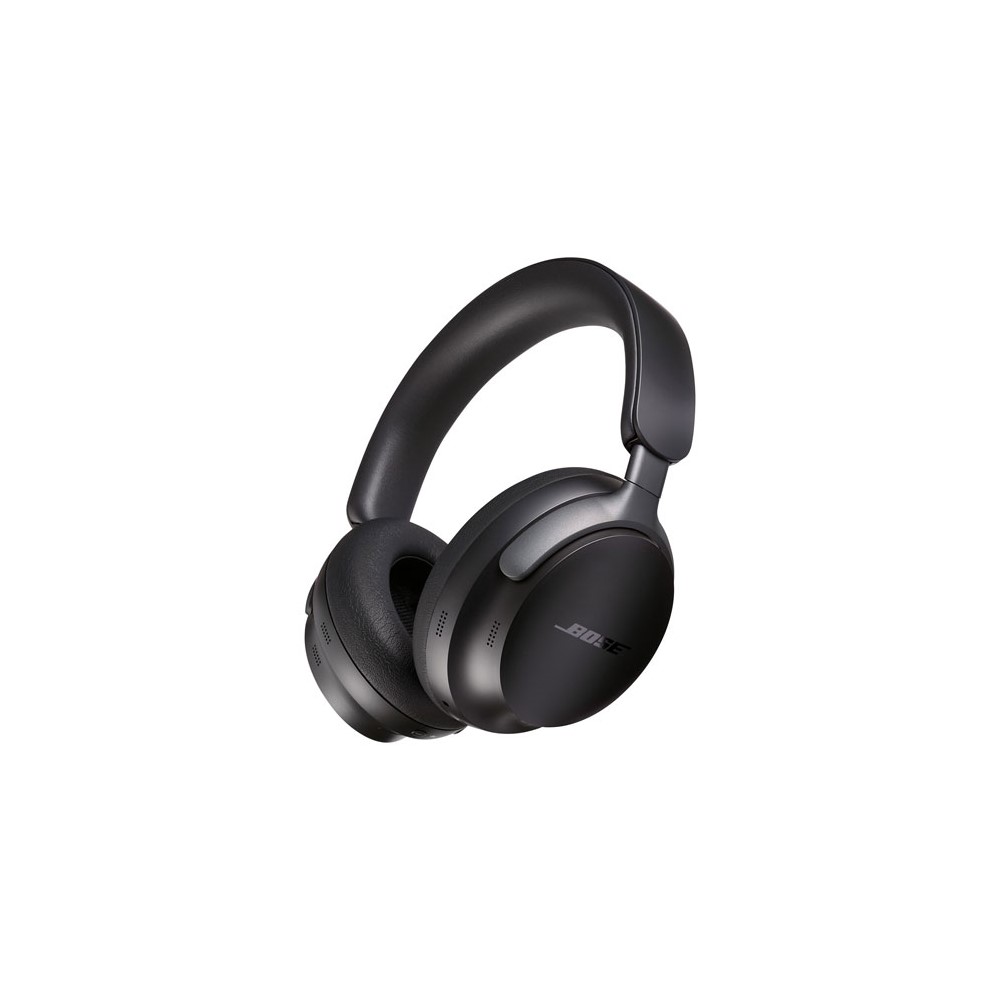
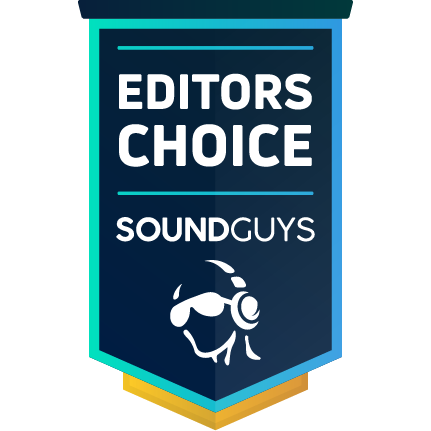
What you should know about the best workout headphones
As with any kind of headphones, there are a few things you should keep in mind when perusing your next pair of workout headphones. We’ve broken down the key points for you; think of it as a cheat sheet of sorts.
The bulk of the cost goes to durability
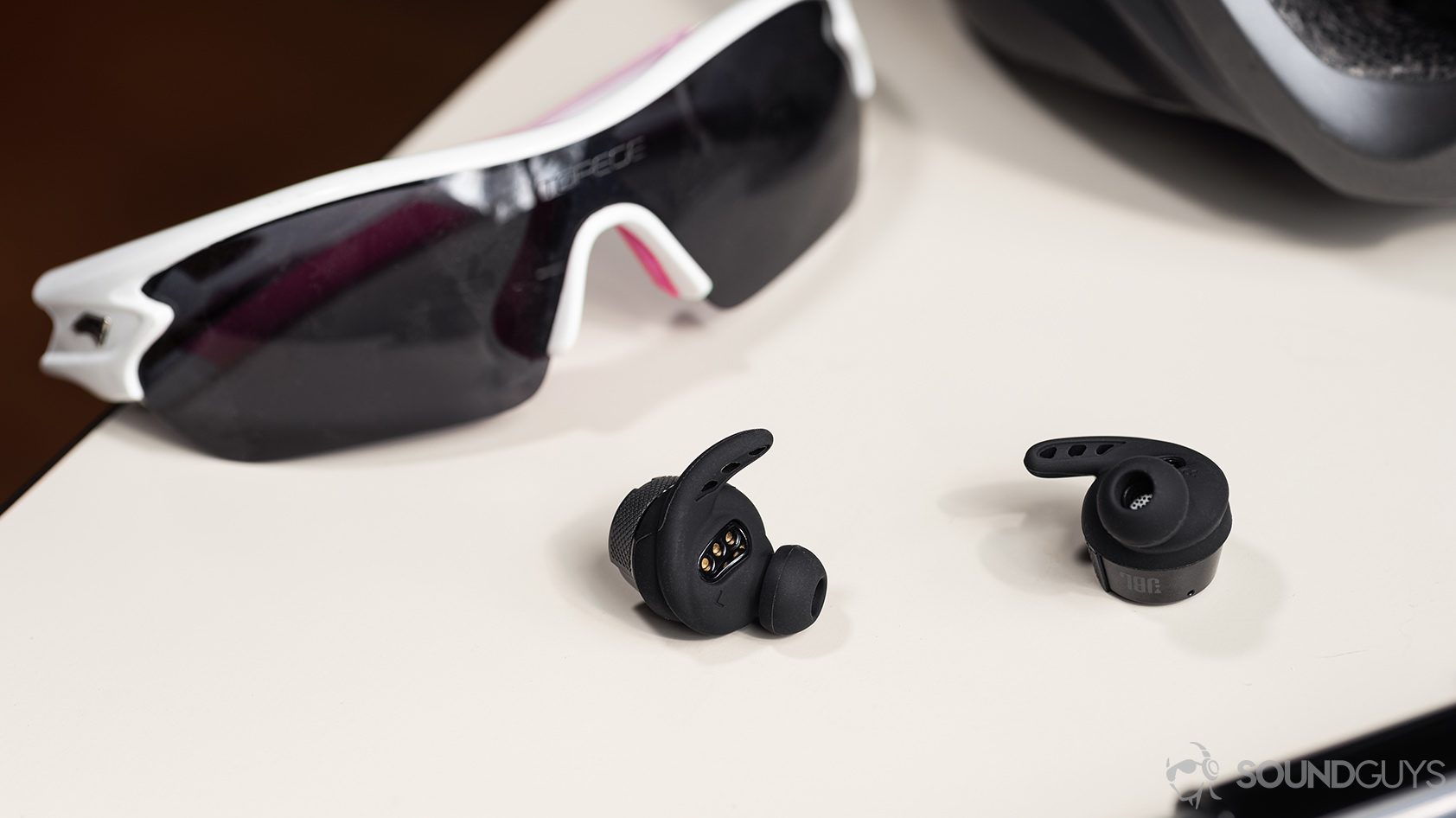
Workout headsets withstand a lot of wear and tear, and that’s okay. You may be wondering why you should pay for something you’re just going to destroy, and well, if you buy the right set of workout headphones for you, you won’t break it (at least not immediately).
Most workout headsets include durability features like flexible, robust headbands, replaceable ear pads, and even the occasional modular design. You pay a premium for this thoughtfulness, and it extends the life of your product.
Comfort, fit, and isolation are all important
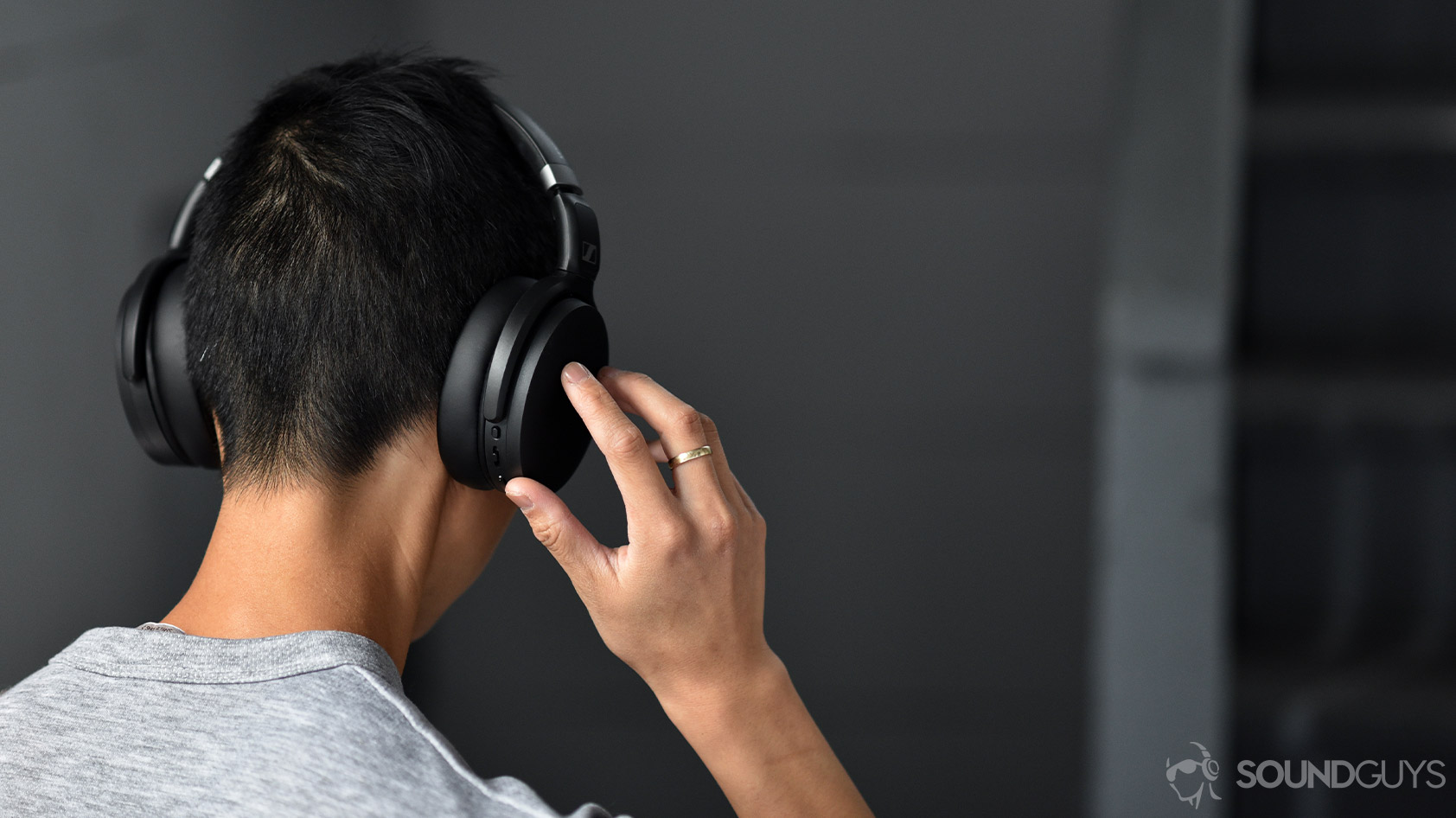
As is the case with almost every pair of headphones, a good fit is essential for keeping the bad sounds out and the good sounds in. Outside noise can really get in the way of a good listening experience because of auditory masking, which is the natural way that your brain perceives sound. That’s especially true when it comes to on-ear headphones since they don’t completely surround your ears. This kind of design leaves a lot of room (literally) for outside noise to make its way down your ear canals.
But isolation aside, what’s arguably more important is how well the headphones fit. Who cares how good they sound if they keep falling off your head? You’ll want a pair of headphones that find a nice balance between clamping force and comfort, so they won’t fall off during a workout, and they also won’t hurt your ears while you wear them.
What is an IP rating?
If you’re going to be working out, chances are you’re going to be sweating; as we all know, water and electronics don’t mix. The best workout headphones feature some kind of water-resistant certification, denoted by an IP rating.
How much does battery life matter?
If you’re going for a wireless pair of workout headphones, one thing to keep in mind is battery life. The last thing you want is to show up at the gym all hyped up and ready to exercise, only to find you forgot to charge your headphones, and you’re going to be without music. Sure, most people don’t exercise for more than 90 minutes at a time (which most true wireless earbuds can easily handle), but a bigger capacity means you can go a few days without charging.
Noise-induced hearing loss is a real problem
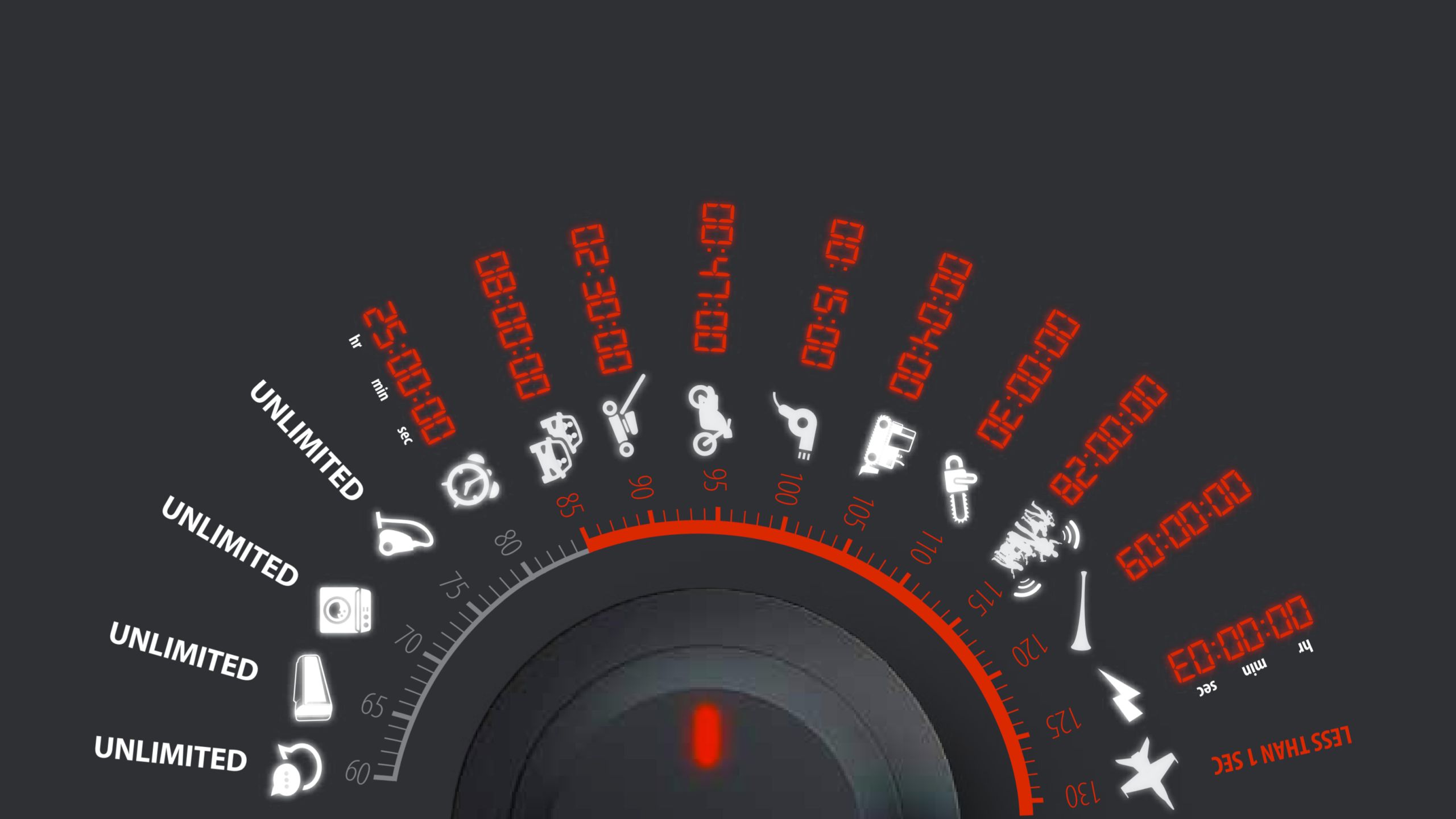
It’s hard to argue that the louder your music is, the easier it is to get pumped up. A higher volume usually helps you feel the bass more. Plus, you probably want to block out the sounds of weights being dropped and the pop music they play at the gym anyway by blasting your headphones. That’s not a good idea.
Noise-induced hearing loss is a real thing, and it sucks. If you consistently play your music too loudly, you can damage the cochlea cells in your inner ear over time. As a general rule of thumb, you probably shouldn’t play your music any louder than 85 dB. If you’re at or around 85dB and still can’t hear your music properly, you might have a bad fit. Definitely adjust the headphones and pads before you go putting your phone on maximum volume.
Best workout headphones: Notable mentions
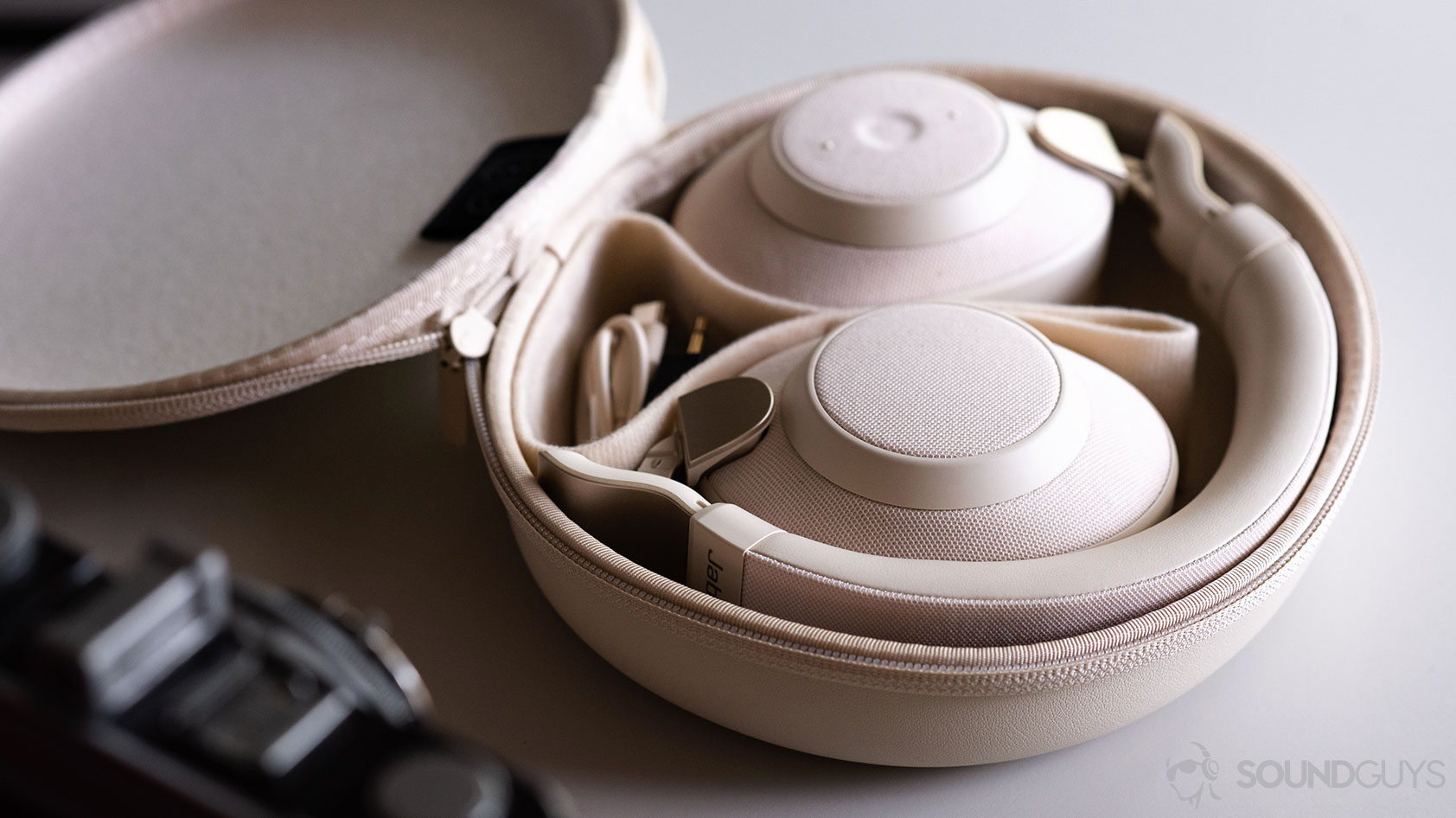
- Skullcandy Hesh ANC ($85.99 at Amazon): The Skullcandy Hesh ANC is a more affordable alternative for active noise canceling headphones (ANC). Its simple design is sure to have mass appeal and won’t draw much attention. Battery life is above average, and you get efficient quick charging from the Hesh ANC. This pair of headphones hits the essentials while staying consistent with the brand’s bass-heavy frequency response and cheaper materials.
- Jabra Elite 85h ($190.99 at Best Buy): This pair of wireless noise canceling headphones feature a water-resistant nano-coating that protects it from sweat droplets. The noise cancelation isn’t great, but the sound quality is good for those who enjoy vocal clarity from their music.
- JLab Flex Sport: With a 20-hour battery life and sweat-resistant build, this headset is made for you to take to the gym.
- JBL UA Sport Wireless Train On-Ear: The headset is sweat-resistant and supplies you with 16 hours of playtime. This is an on-ear version of The Rock Over-Ear Training Headphones and lacks noise canceling.
- AfterShokz Aeropex: Perhaps you don’t want the clunkiness of headphones. In that case, we recommend the AfterShokz Aeropex, a set of bone-conduction headphones that keeps you aware of your surroundings by leaving your ear canals wide open.
What about workout earbuds?
Certain earbuds can also be a great choice for working out, as they are more discreet and often have wingtips for a secure fit. We have a whole article dedicated to the best earbuds for working out, but here are a couple of top picks to consider:
- Beats Fit Pro ($159 at Amazon): The Beats Fit Pro is just as easy to use with an Android device as it is with an iPhone. It seems Apple-owned Beats is trying to appeal to a wider market, and it works. The Fit Pro fits like a pro with the ear tip fit test and multiple ear tips. Sound quality is sure to please most athletes, but the Fit Pro is just at home in the office as it is in the gym.
- Jabra Elite 8 Active ($199 at Amazon): If you need highly durable earbuds, the Jabra Elite 8 Active delivers in spades. They will stay in your ears, provided you can get a good fit. The sound is good, and the noise canceling works well. Athletes who want something office-appropriate can rejoice.
Why you should trust SoundGuys
SoundGuys has been around for a few years now, and in that time, we’ve managed to get our grubby hands on as many pairs of headphones as we can get. Not only do we have plenty of hands-on experience with many of the top brands of headphones, but we also make sure to run each pair of headphones through our objective tests. This helps us clearly demonstrate how a product sounds and performs when it comes to frequency response, isolation, and microphone quality.
The best workout headphones: FAQs
The Plantronics BackBeat FIT 6100 is an excellent choice for gym-goers looking for over-ear headphones designed specifically for working out. These headphones offer a comfortable fit, sweat resistance with an IPX5 rating, and an adjustable headband for vigorous workouts. Additionally, they provide a long battery life of 27 hours, fast charging, and Bluetooth multipoint support, making them a great companion for gym sessions.
If you’re looking for headphones that can handle sweat, the Plantronics BackBeat FIT 6100 and the Shokz OpenRun are solid options. The BackBeat FIT 6100 comes with an IPX5 rating, which means it can withstand sweat and is suitable for workouts. The Shokz OpenRun offers IP67 dust and water resistance, making it a reliable choice for outdoor workouts where sweat and other elements might be a concern.
For those seeking a waterproof headset for workouts, the Shokz OpenRun is a top pick. These bone-conduction headphones feature an IP67 rating, which means they are not only sweat-resistant but also highly resistant to dust and water. They are designed with outdoor athletes in mind, ensuring durability and functionality during intense workouts or outdoor activities while keeping your ears open to your surroundings for safety.
Over-ear headphones are generally better for working out at the gym. The over-ear design allows for better noise isolation to block out ambient gym noise. Over-ear models also tend to have better battery life than on-ear styles. The bigger earcups and headband design provide a more secure and stable fit during exercise.
For most workout situations, earbuds are better than headphones. Earbuds are more compact, lightweight, and portable for carrying to the gym. Their secure fit doesn’t get jostled as much during intense exercise. Earbuds also allow you to hear some ambient sounds for awareness of your surroundings. However, over-ear headphones provide better sound quality and noise isolation if those are priorities.